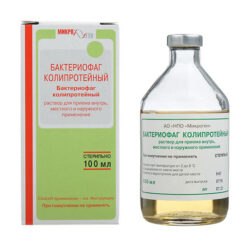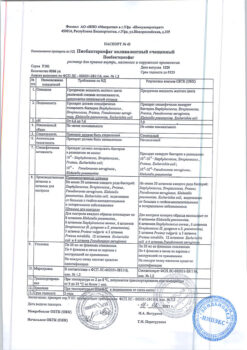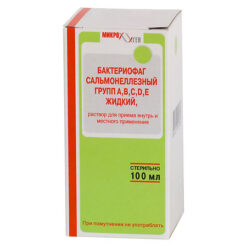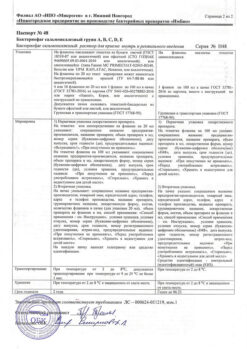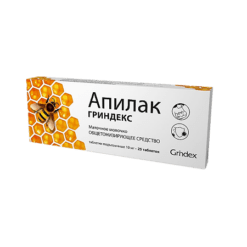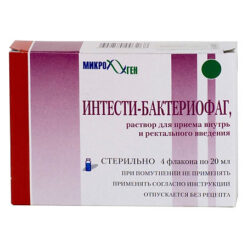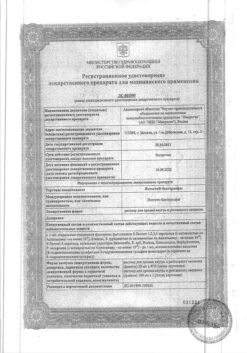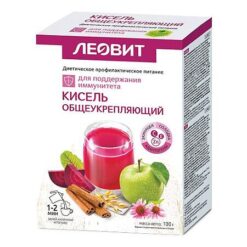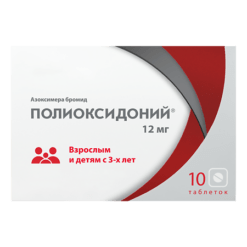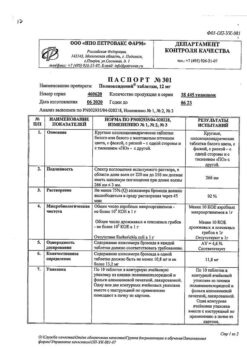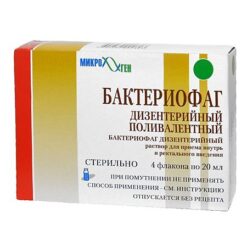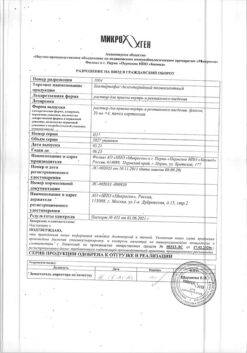No products in the cart.
Emplicity 300 mg 340 mg
€1.00
Out of stock
(E-mail when Stock is available)
Description
Pharmacotherapeutic group:
Antitumor agent, monoclonal antibodies
ATX code: L01XC23
Pharmacological ACTION
Pharmacodynamics
Elotuzumab is a human immunostimulatory monoclonal IgGl antibody that specifically binds to the SLAMF7 protein (the 7th member of the family of lymphocyte activation signaling molecules). SLAMF7 is expressed in large amounts on myeloma cells regardless of the type of cytogenetic abnormality. SLAMF7 is also expressed on natural killer cells, normal plasma cells and other immune cells, including some T cells, monocytes, B cells and dendritic cells. SLAMF7 is undetectable on healthy tissue cells and hematopoietic stem cells.
Elotuzumab directly activates natural killer cells through SLAMF7 and Fc-receptors and thereby enhances their anti-myeloma activity in vitro. Elotuzumab also binds to SLAMF7 on myeloma cells, which promotes their interaction with natural killer cells and the destruction of myeloma cells via antibody-dependent cellular cytotoxicity (ADC). In preclinical studies, elotuzumab showed synergistic activity when coadministered with lenalidomide.
There are no data on carcinogenicity or mutagenicity of the drug in animals and humans.
Pharmacokinetics
The pharmacokinetics of elotuzumab were studied in patients with multiple myeloma who received the drug at doses ranging from 0.5 to 20 mg/kg. Elotuzumab has nonlinear pharmacokinetics, with drug clearance decreasing from 17.5 to 5.8 mL/day/kg when the dose was increased from 0.5 to 20 mg/kg. This suggests that clearance depends on the interaction with the target, resulting in a more than proportional increase in the area under the concentration-time curve (AUC). The volume of elotuzumab distribution approaches the intravascular volume and is independent of the drug dose. According to the results of population pharmacokinetic analysis, the typical value of central distribution volume is 4.04 L. When elotuzumab is administered at a dose of 10 mg/kg, the drug concentration in blood decreases to approximately 3% of the previously achieved maximum equilibrium concentration. In murine xenograft models, it was found that the maximum therapeutic efficacy of the drug is observed at a plasma concentration of elotuzumab of 70 µg/ml. In humans, the use of elotuzumab at a dose of 10 mg/kg achieves an equilibrium plasma concentration of more than 70 µg/ml.
The metabolism of elotuzumab has not been characterized. The monoclonal antibody is expected to be degraded into small peptides and amino acids during catabolism.
Particular patient groups
Elotuzumab clearance increases with body weight, which is the basis for calculating the drug dose per patient body weight. Population pharmacokinetic analysis showed no dependence of elotuzumab clearance on age (from 37 to 88 years), sex, race, baseline lactate dehydrogenase (LDH) activity, albumin concentration, renal function impairment, and the presence of renal function impairment (from mild to severe, with or without the need for hemodialysis) or mild liver function impairment.
Renal dysfunction
. The pharmacokinetic properties of elotuzumab have been studied when administering combination therapy with lenolidamide and dexamethasone in patients with multiple myeloma and normal renal function (creatinine clearance greater than 90 ml/min), severe renal function impairment not requiring dialysis (creatinine clearance less than 30 ml/min), or terminal renal function impairment requiring dialysis (creatinine clearance less than 30 ml/min). There were no clinically significant differences in clearance of the drug in patients with severe renal dysfunction (with and without dialysis) and patients with normal renal function.
Hepatic impairment
The pharmacokinetic properties of elotuzumab have been studied in patients with mild hepatic impairment (total bilirubin less than or equal to the upper limit of normal (TBN) and ACT above TBN or total bilirubin 1.0 to 1.5 times the ICH or any ACT value) compared with patients with normal liver function (total bilirubin and ACT within normal limits). No differences in clearance of elotuzumab between the above groups of patients were found. Pharmacokinetics of the drug was not studied in patients with moderate hepatic insufficiency (increased total bilirubin from 1.5 to 3.0 VGN, any ACT value) and severe hepatic insufficiency (total bilirubin over 3.0 VGN, any ACT value).
Possible effects of elotuzumab on QTc interval prolongation were studied in patients using doses of 10 and 20 mg/kg both as monotherapy and in combination with lenalidomide and dexamethasone. No changes in mean QT interval values were found. Analysis of clinical ECG values and serum concentrations of elotuzumab showed no significant effect of the drug on repolarization. No clinically significant changes in heart rate, PR interval duration, QRS complex duration, atrio-ventricular conduction or depolarization, or cases of pirouette-type ventricular tachycardia were noted in clinical studies.
Indications
Indications
Active ingredient
Active ingredient
Composition
Composition
1 vial contains*:
The active ingredient: elotuzumab 340 mg or 440 mg,
The excipients: sodium citrate dihydrate 16.6 mg or 21.5 mg; citric acid monohydrate 2.44 mg or 3.17 mg; sucrose 510 mg or 660 mg; polysorbate 80 3.40 mg or 4.40 mg.
*Packing is made with an overpackage of 40 mg (13.3%) for 300 mg and 40 mg (10%) for 400 mg, which is necessary to guarantee full extraction of the stated dosage. The recoverable amounts of elotuzumab in one vial are 300 mg and 400 mg, respectively.
How to take, the dosage
How to take, the dosage
The drug must be administered under the direction of a physician experienced in the treatment of multiple myeloma.
Patients must be premedicated before each dose of Emplicity® is administered.
The dosing regimen
The recommended dose of Emplicity® in combination with dexamethasone is 10 mg/kg as an intravenous infusion on days 1, 8, 15, 22 during the first two 28-day cycles and every two weeks in subsequent cycles on days 1 and 15. Treatment should be continued until disease progression or signs of intolerable toxicity appear. Dexamethasone should be used as follows:
The dosing schedule is shown in Table 1.
Table 1: Recommended schedule of administration of Emplicity® in combination with lenalidomide and dexamethasone
Loop
1 loop, 2 introductions2
1st cycle, 3rd and 4th introductions, and all subsequent cycles2
Cycle Day
1
8
15
22
1
8
22
Premedication1
?
?
?
?
?
?
Emplicity® drug (mg/kg) intravenously
10
/td>
10
10
10
10
10
Lenalidomide3(25 mg) orally
Days 1 – 21
Days 1 – 21
Dexamethasone4(mg) orally
28
td>
28
28
28
28
40
28
40
Cycle day
1
8
/td>
15
22
1
8
15
22
1 Premedication with the following drugs is performed 45-90 minutes before administration of Emplicity®: 8 mg of dexamethasone intravenously, H1-histamine receptor blocker: diphenhydramine (25-50 mg or intravenously) or similar; H2-histamine receptor blocker: ranitidine (50 mg intravenously or 150 mg orally) or similar; paracetamol (650-1000 mg orally).
2 Cycle 28 days
3No earlier than 2 hours after administration of Emplicity®.
4 Intravenous dexamethasone (28 mg) 3-24 hours before administration of Emplicity®.
Injection instructions
The administration of Emplicity® should be started at a rate of 0.5 ml per minute. If tolerated well, the infusion rate can be increased in increments as described in Table 2. The maximum infusion rate should not exceed 5 ml per minute.
Table 2: Emplicity® administration rate
Cycle 1, dose 1
Cycle 1, dose 2
Cycle 1, dose 3 and 4,
And all subsequent doses
Time interval
Time interval
Time interval
0-30 min
0.5 ml/min
0-30 min
3 ml/min
30-60 min
1 ml/min
â¥30 min
4 ml/min*
5 ml/min*
â¥60 min
2 ml/min*
–
–
Interaction
Interaction
Special Instructions
Special Instructions
Infusion reactions
Emplicit® may cause infusion reactions. Infusion reactions have been reported in clinical studies in approximately 10% of patients treated with Emplicity®, lenalidomide and dexamethasone.
All noted infusion reactions were not above grade 3 severity. In clinical trials with combination therapy with lenalidomide and dexamethasone, grade 3 infusion reactions occurred in 1% of patients. The most common adverse reactions were fever, chills, and hypertension. In a study of combination therapy with lenalidomide and dexamethasone, 5% of patients required interruption of Emplicity® due to the development of infusion reactions at an average of 25 minutes, and 1% of patients had to withdraw the drug due to infusion reactions. Among patients who had infusion reactions, 70% (when combined with lenalidomide and dexamethasone) had them during the first dose.
Combination therapy with elotuzumab
Emplicity® is used in combination with other drugs; thus, the cautions and precautions applicable to these drugs will also be relevant to combination therapy involving elotuzumab. These include potential risk to the fetus, presence and transmission of the drug/antibodies with sperm and blood, and prohibition of blood and/or sperm donation. Before starting treatment, consider the guidelines for all drugs used in combination with Emplicity®.
Contraindications
Contraindications
Side effects
Side effects
The following are adverse reactions reported in patients with multiple myeloma receiving combination therapy with Emplicity8. Most adverse reactions were mild to moderate (grade 1 or 2). These reactions are presented by systemic organ class and by frequency. The frequency of occurrence is defined as: very common (>1/10); common (>1/100,1/1000,1/10000,
System-organ class
Unwanted reactions
Total frequency
Frequency of reactions3-4 degrees
Infections and invasions
Herpes zoster
Very often
Often
Hypoesthesia
Often
Infrequent
Headache
Very often
Infrequently
Vessel disorders
Deep vein thrombosis
Often
Often
Respiratory system
system
Cough (including productive cough and cough caused by upper respiratory tract involvement)
Very often
Infrequent
Oropharyngeal
Pain
Frequent
Infrequent unknown
Skin and subcutaneous tissue
Night sweats
Frequent
Frequency unknown
General disorders and reactions to drug administration
Chest pain
Often
Often
Fatigue
Very often
Often
Fever
Very often
Often
a Shingles herpes combines a group of terms: herpes zoster, oral herpes, herpetic viral infections
b pneumonia combines a group of terms: pneumonia, atypical pneumonia, bronchopneumonia, lobular pneumonia, bacterial pneumonia, fungal pneumonia, influenza pneumonia, and pneumococcal pneumonia
Infusion reactions
. In a clinical trial involving patients with multiple myeloma, infusion reactions were noted in approximately 10% of patients who were premedicated and received Emplicity® therapy in combination with lenalidomide and dexamethasone (N=318). The incidence of mild to moderate infusion reactions was > 50% among patients who did not receive premedication. All reports of infusion reactions referred to grade 3 reactions and below. Grade 3 infusion reactions were reported in 1% of patients. The most frequently reported symptoms of infusion reactions included: fever, chills, and hypertension. 5% of patients required interruption of Emplicity® infusion within an average of 25 minutes due to an infusion reaction, and 1% of patients discontinued treatment due to the onset of infusion reactions. Among patients who had an infusion reaction, 70% (23/33) had a reaction during the first dose.
Infections
The incidence of infections, including pneumonia, was higher in the Emplicity® therapy group than in the control group. In a clinical trial involving patients with multiple myeloma, infections were noted in 81.4% of patients treated with Emplicity® in combination with lenalidomide and dexamethasone (N=318) and in 74.4% of patients treated with lenalidomide and dexamethasone (N=317). Grade 3-4 infections were reported in 28% of patients treated with Emplicity® combined with lenalidomide and dexamethasone and in 24.3% of patients treated with lenalidomide and dexamethasone. Fatal infections were rare and occurred in 2.5% of patients treated with Emplicity® in combination with lenalidomide and dexamethasone and in 2.2% of patients treated with lenalidomide and dexamethasone. The incidence of pneumonia was higher in the Emplicity® therapy group in combination with lenalidomide and dexamethasone compared to the lenalidomide and dexamethasone therapy group: 15.1% and 11.7% of patients, with 0.6% and 0% mortality, respectively.
Secondary malignancies
The incidence of secondary malignancies was higher in patients treated with Emplicity® than in the control group. In a clinical trial involving patients with multiple myeloma, invasive secondary malignancies were noted in 6.9% of patients treated with Emplicity® in combination with lenalidomide and dexamethasone (N=318) and in 4.1% of patients treated with lenalidomide and dexamethasone (N=317). Secondary malignancies are known to be associated with lenalidomide exposure, which was observed over a longer period of time in patients who received combination therapy with Emplicity , lenalidomide and dexamethasone, than among patients who received lenalidomide and dexamethasone therapy. The incidence of hematologic tumors was similar in the two therapy groups (1.6%). Solid tumors occurred in 2.5% of patients treated with Emplicity® combined with lenalidomide and dexamethasone and in 1.9% of patients treated with lenalidomide and dexamethasone. Skin cancer (not melanoma) was reported in 3.1% of patients treated with Emplicity® in combination with lenalidomide and dexamethasone and in 1.6% of patients treated with lenalidomide and dexamethasone.
Deep vein thrombosis
. In a clinical trial involving patients with multiple myeloma, deep vein thrombosis was noted in 7.2% of patients treated with Emplicity® in combination with lenalidomide and dexamethasone (N=318) and in 3.8% of patients treated with lenalidomide and dexamethasone (N=317). Among patients taking aspirin, deep vein thrombosis was noted in 4.1% of patients treated with Emplicity® combined with lenalidomide and dexamethasone and in 1.4% of patients treated with lenalidomide and dexamethasone. The incidence of deep vein thrombosis noted among therapy groups was similar for patients receiving prophylactic therapy with low-molecular-weight heparin (2.2% in both treatment groups) and for patients receiving vitamin K antagonists, with rates of 0% for patients receiving Emplicity® therapy combined with lenalidomide and dexamethasone and 6.7% for patients receiving lenalidomide and dexamethasone therapy.
Immunogenicity
Emplicity®, like other protein drugs, is immunogenic.
The formation of antibodies to the drug was observed in 18.5% of patients (treated with Emplicity® and whose levels of relevant antibodies were measured). Neutralizing antibodies were detected in 6.4%. In the majority of patients immunogenicity of the drug was transient and was observed only at the beginning of therapy and disappeared in 2-4 months. No correlation between the presence of antibodies to the drug in plasma and changes in pharmacokinetic parameters, efficacy and safety of the drug was found.
Overdose
Overdose
One case of drug overdose has been reported when using 23.3 mg/kg elotuzumab in combination with lenalidomide and dexamethasone. The patient did not experience infusion reactions or other symptoms and did not require any additional treatment related to the overdose. The patient continued therapy with Emplicity®.
The maximum tolerated dose has not been established. In clinical trials, approximately 78 patients received elotuzumab at a dose of 20 mg/kg without developing toxic effects. In case of overdose, treatment should consist of symptomatic drug therapy according to the adverse reactions that occur with close monitoring of the patient.
Additional information
| Shelf life | 3 years. |
|---|---|
| Conditions of storage | Store at 2 to 8 ° C in a light-protected place. Do not freeze. Keep out of reach of children! |
| Manufacturer | Bristol-Myers Squibb, USA |
| Brand | Bristol-Myers Squibb |
Related products
Buy Emplicity 300 mg 340 mg with delivery to USA, UK, Europe and over 120 other countries.


